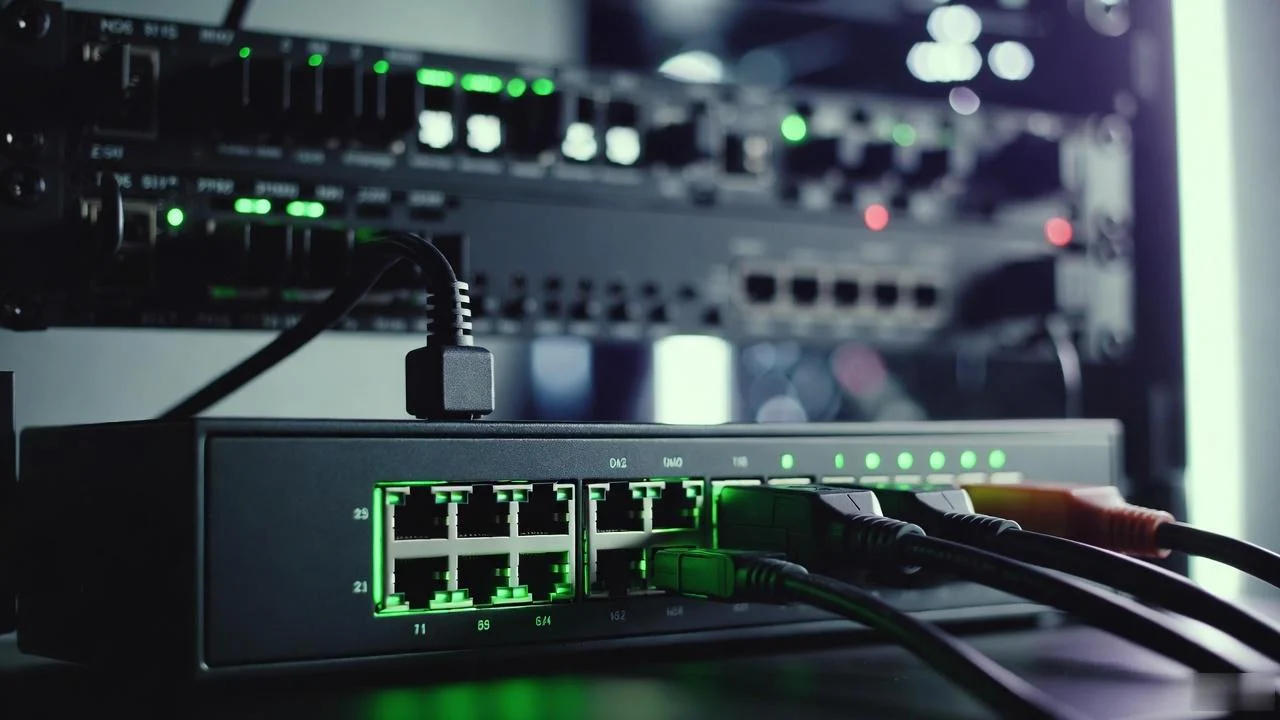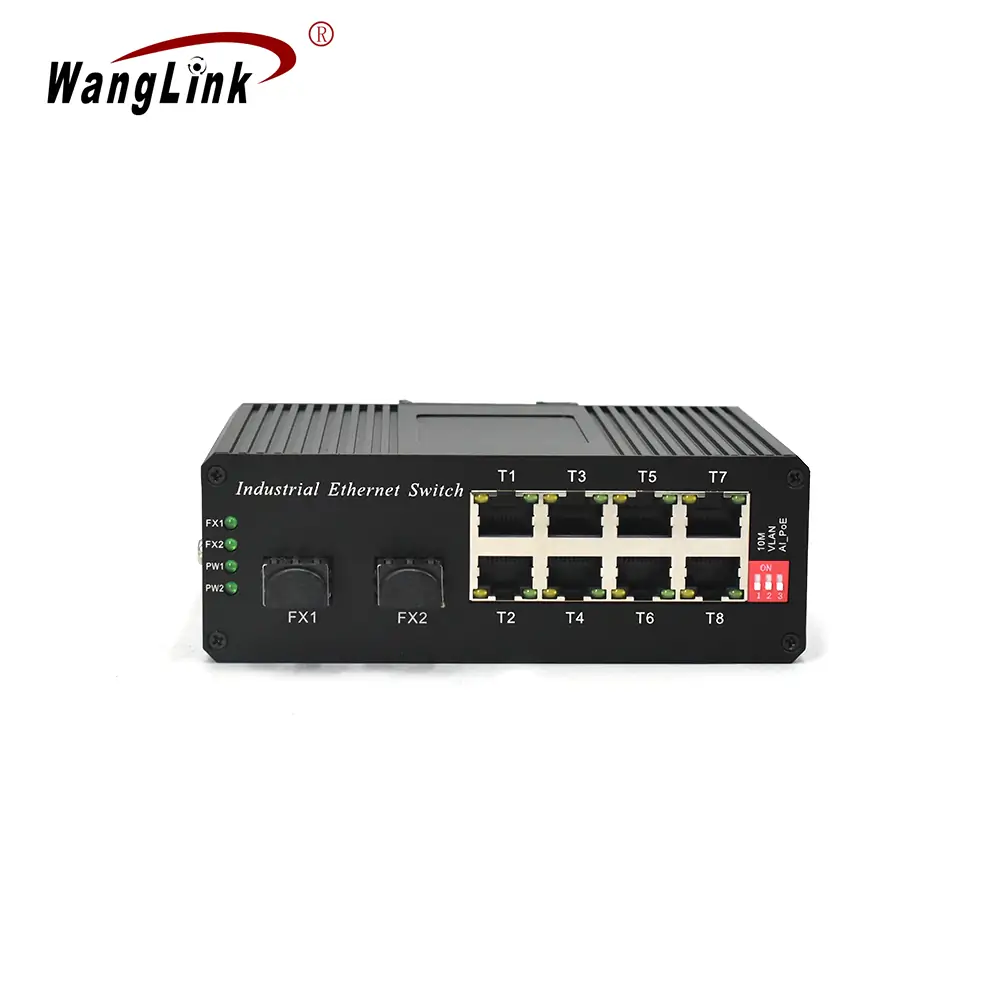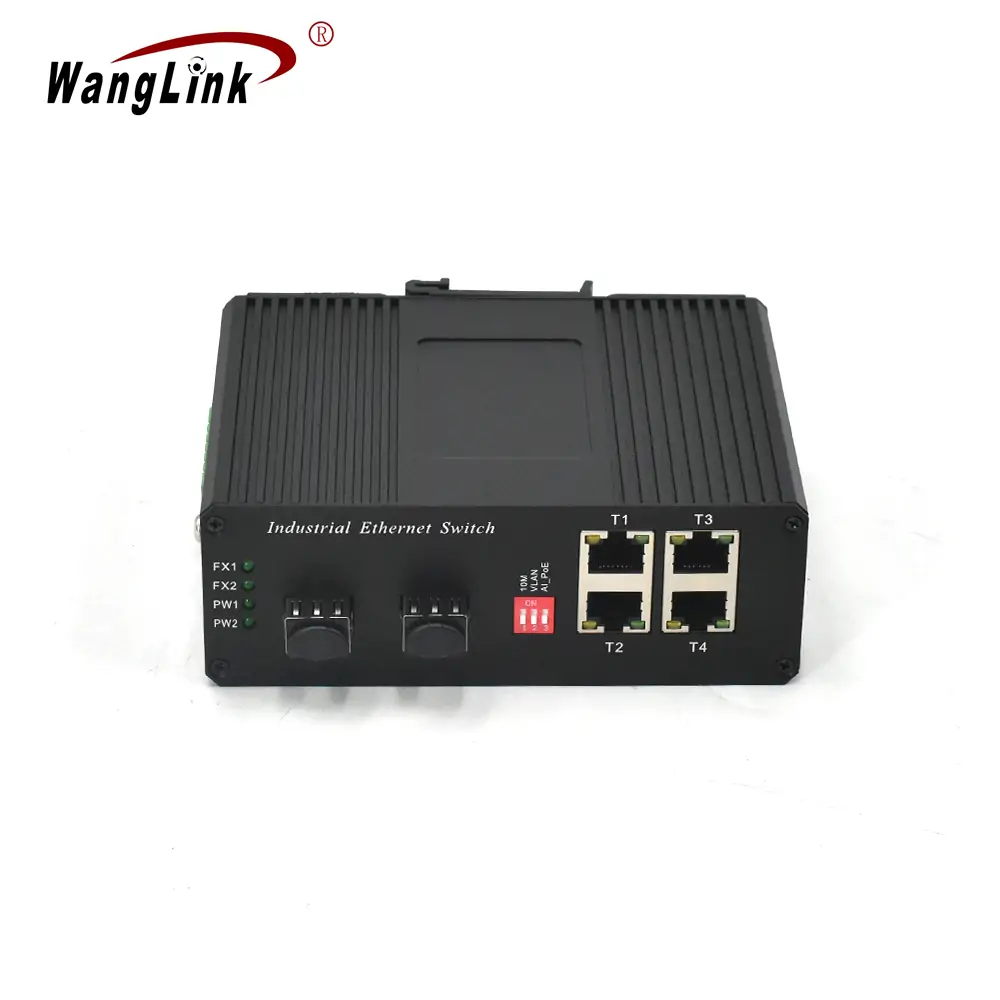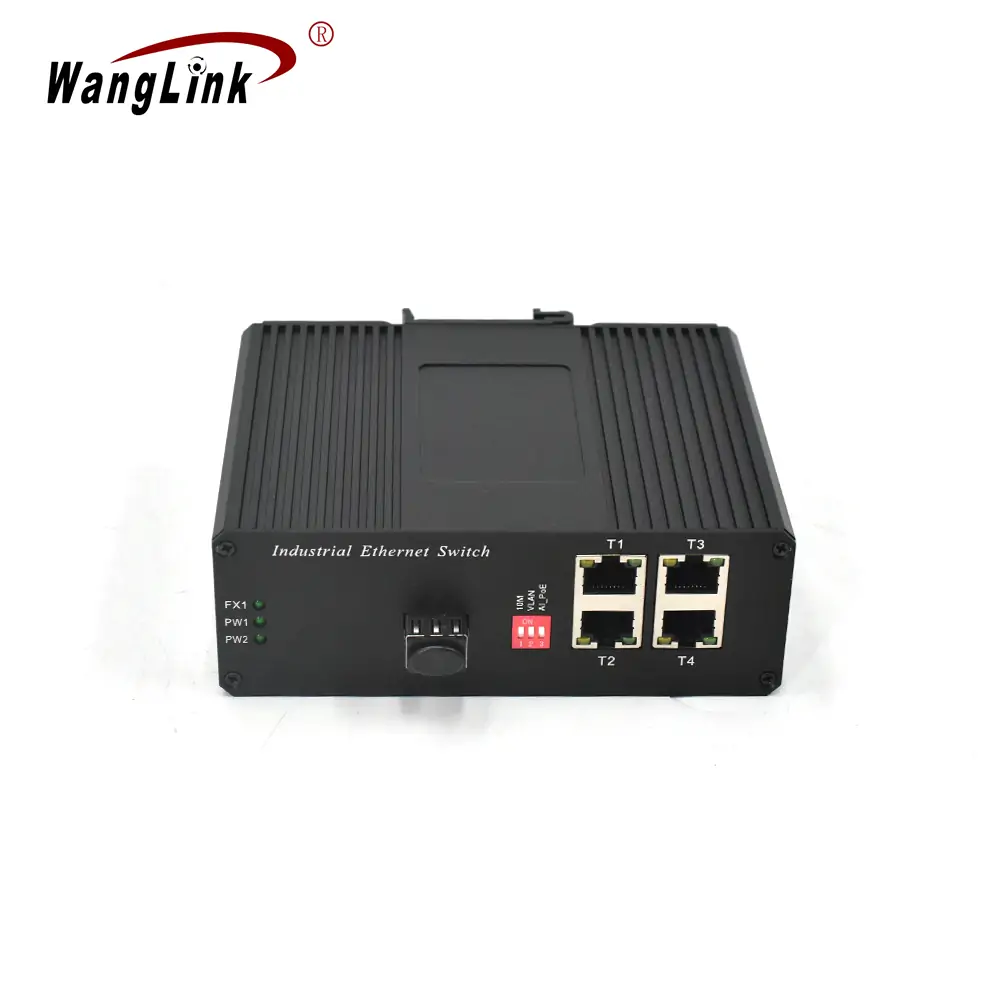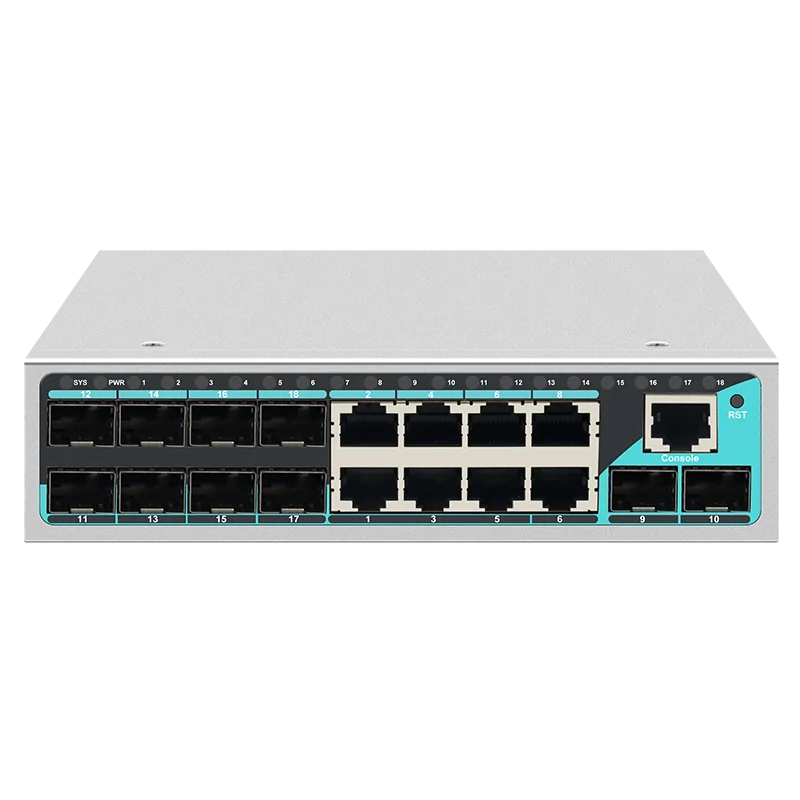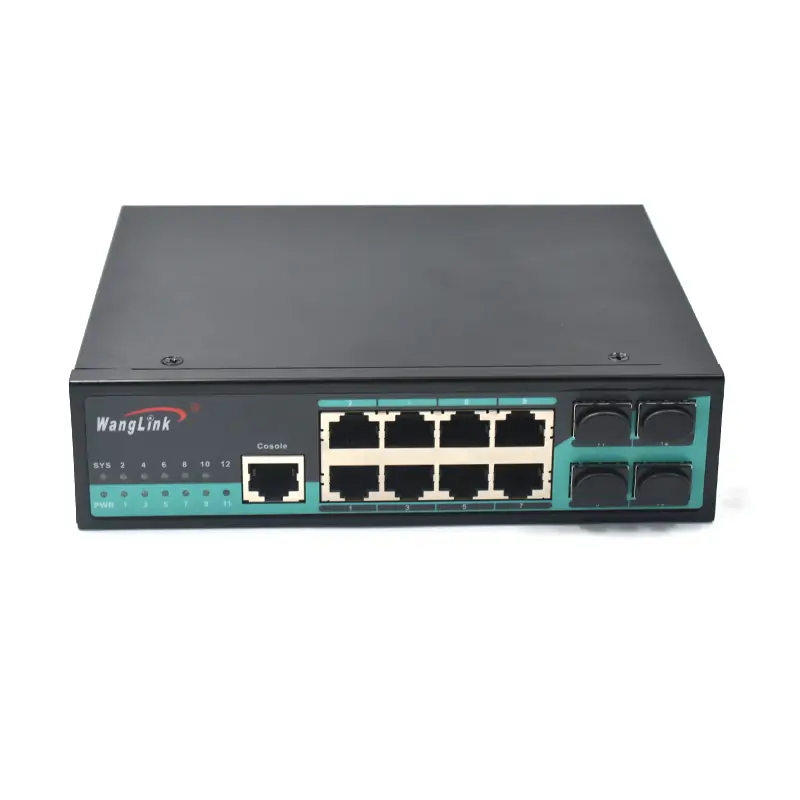USB-C Ethernet Switch: The Ultimate Guide to Modern Network Connectivity Solutions
In today’s rapidly evolving digital landscape, network connectivity has become more crucial than ever. The emergence of USB-C Ethernet switches has revolutionized how we approach network infrastructure, offering unprecedented flexibility and performance in compact form factors. As a leading ethernet switch manufacturer, Wanglink has been at the forefront of this technological advancement, providing innovative solutions that meet the diverse needs of modern businesses and consumers.
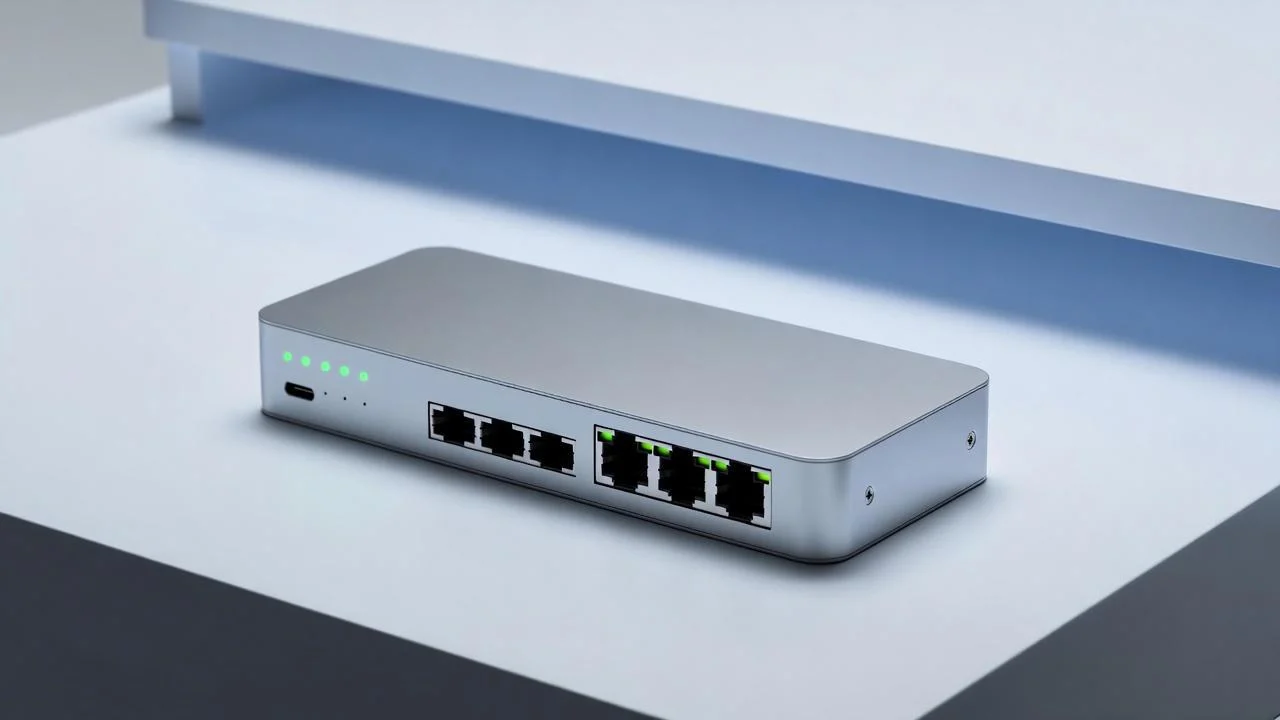
Understanding USB-C Ethernet Switch Technology What is a USB-C Ethernet Switch? A USB-C Ethernet switch is a network device that combines the convenience of USB-C connectivity with traditional Ethernet switching functionality. These devices allow users to expand their network capabilities through a single USB-C connection, making them ideal for modern laptops, tablets, and other devices that prioritize portability without sacrificing connectivity options. Key Features and Benefits The integration of USB-C technology into Ethernet switches offers several compelling advantages: Universal Compatibility: Works with any device featuring USB-C ports Power Delivery: Many models support power passthrough capabilities Compact Design: Significantly smaller than traditional switches Plug-and-Play Operation: No additional drivers required for most operating systems High-Speed Data Transfer: Supports gigabit and multi-gigabit speeds Types of USB-C Ethernet Switches 1. Portable USB-C Network Hubs These compact devices are perfect for professionals who need reliable network connectivity on the go. They typically feature: 3-8 Ethernet ports USB-C power delivery Lightweight aluminum construction LED status indicators 2. Desktop USB-C Switches Designed for office environments, these switches offer: 8-24 Ethernet ports Enhanced cooling systems Mounting options Advanced management features 3. Industrial USB-C Ethernet Solutions For harsh environments, industrial-grade options provide: Extended temperature ranges Ruggedized enclosures DIN rail mounting Enhanced EMI protection Technical Specifications Comparison Feature Portable Hub Desktop Switch Industrial Switch Port Count 3-8 8-24 4-16 Power Consumption 5-15W 20-50W 10-30W Operating Temperature 0°C to 40°C 0°C to 50°C -40°C to 75°C Data Rate 1Gbps 1-10Gbps 100Mbps-1Gbps Management Unmanaged Managed/Unmanaged Managed Price Range $50-150 $200-800 $300-1200 Applications and Use Cases Corporate Environments Modern offices increasingly rely on USB-C Ethernet switches for: Conference Room Connectivity: Providing instant network access for meeting participants Hot Desking Solutions: Enabling flexible workspace arrangements Temporary Network Extensions: Supporting pop-up workstations and events Educational Institutions Schools and universities utilize these devices for: Classroom Technology Integration: Connecting multiple devices simultaneously Student Lab Environments: Providing reliable network access for research projects Administrative Flexibility: Supporting mobile teaching setups Home Office Solutions Remote workers benefit from: Multi-Device Connectivity: Connecting printers, NAS devices, and computers Gaming Setups: Ensuring stable connections for competitive gaming Smart Home Integration: Linking IoT devices to the main network A modern home office setup featuring a USB-C Ethernet switch as the central networking hub. The image uses a 4:3 aspect ratio with warm, natural lighting from a nearby window. The scene shows a wooden desk with a laptop connected to the switch, which has several Ethernet cables neatly organized. Additional devices like a printer and smart home hub are visible in the background. The color palette consists of warm browns and soft whites, creating a comfortable, productive atmosphere. The switch itself is positioned prominently in the foreground with clear visibility of its ports and status lights. Case Study: TechCorp's Network Modernization Challenge TechCorp, a mid-sized software development company, faced significant networking challenges in their new flexible office space. With 150 employees using various devices and frequent client visits requiring network access, their traditional infrastructure couldn't adapt to the dynamic environment. Solution Implementation Working with Wanglink's customization services, TechCorp deployed a comprehensive USB-C Ethernet switch solution: Conference Rooms: 8-port USB-C switches for instant connectivity Hot Desks: Portable 4-port hubs for flexible seating Development Labs: High-performance 16-port managed switches Results Achieved 50% reduction in network setup time for meetings 99.9% uptime across all network segments 30% cost savings compared to traditional infrastructure Enhanced employee satisfaction due to improved connectivity Lessons Learned The implementation revealed several key insights: Proper planning for power delivery requirements is crucial Employee training on device usage improves adoption rates Regular firmware updates ensure optimal performance Having spare units available minimizes downtime Selection Criteria for USB-C Ethernet Switches Performance Requirements When choosing a USB-C Ethernet switch, consider: Data Transfer Speeds Fast Ethernet (100Mbps): Suitable for basic office applications Gigabit Ethernet (1Gbps): Ideal for most business environments Multi-Gigabit (2.5/5/10Gbps): Required for high-bandwidth applications Port Density Determine the number of connections needed: Small offices: 4-8 ports Medium businesses: 8-16 ports Large enterprises: 16+ ports with stacking capabilities Power Considerations USB-C switches offer various power options: Bus-Powered: Drawing power from the host device Self-Powered: Using external power adapters Power Delivery: Providing power to connected devices Management Features Consider the level of control required: Unmanaged: Plug-and-play operation Smart Managed: Basic configuration options Fully Managed: Complete network control and monitoring Installation and Configuration Guide Step 1: Pre-Installation Planning Before installing your USB-C Ethernet switch: Assess network requirements and topology Verify power availability and requirements Plan cable routing and management Prepare necessary documentation Step 2: Physical Installation Positioning: Place the switch in a well-ventilated area Connections: Connect the USB-C cable to the host device Network Cables: Attach Ethernet cables to required ports Power: Connect external power if required Step 3: Configuration and Testing Verify LED indicators show proper operation Test connectivity to all connected devices Configure management features if applicable Document the installation for future reference A detailed technical diagram showing the installation process of a USB-C Ethernet switch in a network environment. The image features a 16:10 aspect ratio with a clean, technical illustration style using blue and gray color schemes. The diagram shows the switch connected to various devices including laptops, printers, and servers through Ethernet cables. Clear labeling indicates port numbers and connection types. The background is white with subtle grid lines, giving it a professional technical manual appearance. Arrows indicate data flow directions, and small icons represent different device types connected to the network. Troubleshooting Common Issues Connection Problems Symptom: No network connectivity after connecting the switch Solutions: Verify USB-C cable integrity Check power supply adequacy Confirm driver installation (if required) Test with different USB-C ports Performance Issues Symptom: Slow data transfer speeds Solutions: Verify cable specifications (Cat5e minimum for Gigabit) Check for electromagnetic interference Update device drivers and firmware Monitor network utilization Power-Related Problems Symptom: Switch not powering on or intermittent operation Solutions: Ensure adequate power delivery from host device Use external power adapter if available Check USB-C port power specifications Verify power requirements match capabilities Future Trends in USB-C Ethernet Technology Emerging Standards The networking industry continues to evolve with new standards: USB4 Integration: Enhanced bandwidth and compatibility Power Delivery 3.1: Higher power delivery capabilities Multi-Gigabit Adoption: Widespread 2.5G and 5G Ethernet support PoE++ Support: Advanced Power over Ethernet capabilities Market Predictions Industry analysts predict significant growth in USB-C Ethernet switch adoption: 35% annual growth rate through 2027 Increased integration in enterprise environments Enhanced security features and management capabilities Greater emphasis on energy efficiency Why Choose Wanglink for Your USB-C Ethernet Switch Needs As a leading network equipment supplier with over 13 years of manufacturing experience, Wanglink offers unparalleled expertise in USB-C Ethernet switch technology. Our comprehensive approach includes: Manufacturing Excellence State-of-the-art facilities: Modern production lines with strict quality control Extensive product range: Thousands of models serving various industries Custom solutions: One-stop OEM and ODM services Quality assurance: Rigorous testing protocols ensuring reliability Customer Support Expert consultation: Industry-leading specialists provide personalized service Inventory guarantee: $30 million in stock for immediate shipping Flexible terms: Various contract and payment options available Global reach: Worldwide shipping and support capabilities Innovation Leadership Wanglink continues to push the boundaries of networking technology: Advanced PCBA design capabilities Cutting-edge research and development Sustainable manufacturing practices Continuous product improvement For more information about our USB-C Ethernet switch solutions, visit our products page or contact our team directly. Frequently Asked Questions (FAQ) Q1: What's the difference between a USB-C Ethernet switch and a traditional Ethernet switch? A: USB-C Ethernet switches connect to devices via USB-C ports and often draw power from the host device, making them more portable and easier to deploy. Traditional switches require separate power sources and are typically designed for permanent installation. Q2: Can I use a USB-C Ethernet switch with devices that don't have USB-C ports? A: Yes, you can use USB-C to USB-A adapters or USB-C hubs with multiple connection types. However, ensure the adapter supports the required data rates and power delivery specifications. Q3: How many devices can I connect to a USB-C Ethernet switch? A: This depends on the specific model. Portable units typically support 3-8 devices, while desktop models can handle 8-24 connections. The actual number also depends on bandwidth requirements and network usage patterns. Q4: Do USB-C Ethernet switches support Power over Ethernet (PoE)? A: Some advanced models do support PoE functionality, allowing you to power compatible devices like IP cameras and wireless access points directly through the Ethernet cables. Check specifications for PoE support and power budgets. Q5: What's the maximum cable length I can use with a USB-C Ethernet switch? A: Standard Ethernet cable length limitations apply - up to 100 meters (328 feet) for Cat5e/Cat6 cables. The USB-C connection to the host device should be kept as short as possible, typically under 2 meters for optimal performance. Q6: Are USB-C Ethernet switches compatible with all operating systems? A: Most USB-C Ethernet switches are plug-and-play compatible with Windows, macOS, and Linux systems. Some advanced management features may require specific software or drivers. Q7: How do I choose between managed and unmanaged USB-C Ethernet switches? A: Unmanaged switches are ideal for simple connectivity needs and plug-and-play operation. Managed switches offer advanced features like VLAN support, QoS, and network monitoring, making them suitable for enterprise environments requiring network control. Q8: Can I daisy-chain multiple USB-C Ethernet switches? A: While technically possible through Ethernet connections, it's not recommended due to potential performance degradation and increased latency. For larger networks, consider switches with higher port counts or proper network design with backbone connections. Ready to upgrade your network infrastructure with cutting-edge USB-C Ethernet switch technology? Contact Wanglink today at [email protected] or WhatsApp +8613544167258 to discuss your specific requirements and discover how our innovative solutions can transform your connectivity experience.
